Sanctuary gardens, also called wellness gardens, might be gaining traction on social media, but TOPOPHYLA landscape architect Eric Arneson says they’re anything but a trend. “Sanctuary gardens aren’t passing fads; they reflect qualities that all good gardens have always had to offer.” Such qualities include flowers, birds, butterflies, bees—a whole habitat, big or small, to ignite the senses. “In today’s fast-paced, high-stress world, people are simply starting to recognize and long for these connections, ones that are deeply rooted in our biology—sanctuary gardens aren’t new trends; they’re just more necessary than ever,” Arneson adds.
Why? Because the world is more chaotic than ever. From the never-ending stream of jaw-dropping news to navigating the everyday happenings of life, finding respite in nature is essential. While many meditation apps and soul-nourishing playlists exist, nothing soothes the nervous system quite like a few mindful moments outside, hence why sanctuary gardens are emerging as a key home feature in 2025.
“We all appreciate a way to address our spiritual nature,” says landscape architect Janice Parker. “Sanctuary gardens can teach us to pay attention and to care. As you spend time in a garden, you develop attention, patience, skill, and knowledge. Gardening and plants show us the rewards of our understanding, caring, and developing skills, and in this way, it is a spiritual practice.”
Just as spirituality is subjective, so are sanctuary gardens. What might feel like paradise to one person can feel anything but to another. Because of that, Matthew Macchietto, associate principal at landscape architecture firm Hoerr Schaudt, reveals that sanctuary gardens aren’t copy-paste—they’re intentional.
“Sanctuary is a word that means something slightly different to each person, and the most powerful gardens are those that leave room for individual interpretation,” he explains. “As designers, we can’t script someone’s emotional experience, but we can shape conditions that invite it. Through sensory engagement, ecological presence, or cultural memory, sanctuary gardens can quietly model a more caring and attentive relationship between people and place.”
With that in mind, we set out to determine what sets sanctuary gardens apart. Here’s what we found.
Read these gardening stories next
They Offer a Sense of Safe Enclosure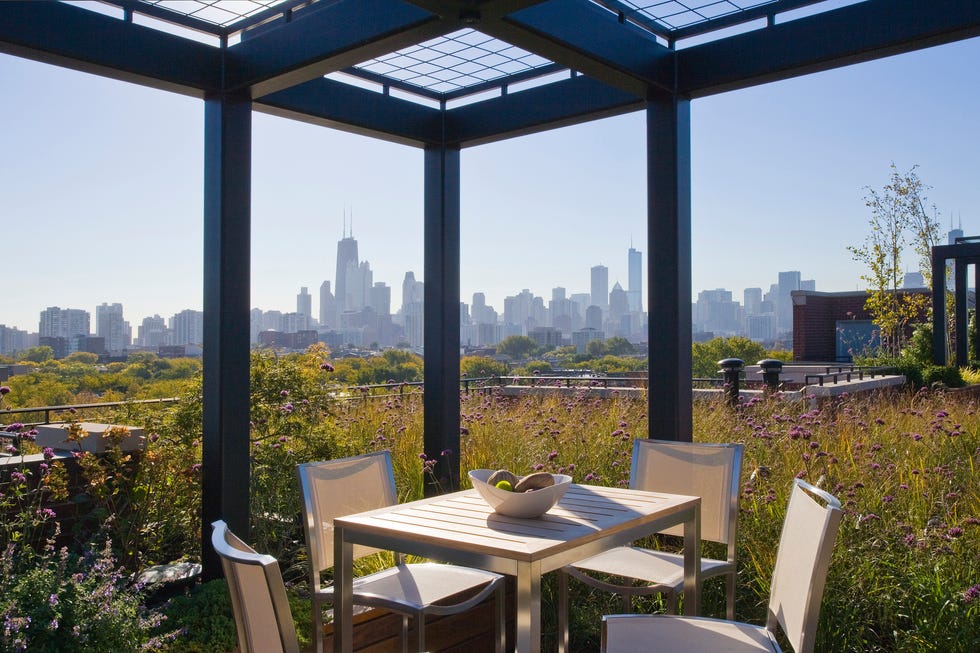
Hoerr Schaudt
It’s not about the size of the garden, it’s about how it envelops you. Jinny Blom of Jinny Blom Studio says sanctuary gardens require a sense of safe enclosure. “They’re gently nestled in beautiful planting and are securely protected,” she explains. “We can find sanctuary even in the busiest city if care is taken to fulfil these simple needs.”
Parker agrees. “A sanctuary garden must create a sense of privacy and peace,” she says. “Beautiful, enclosed spaces created with layered plantings and artful hedges—strategically placed either along a property line or around a specific area in your garden—can work together beautifully to create a sense of seclusion and peaceful serenity.”
…But They Don’t Confine You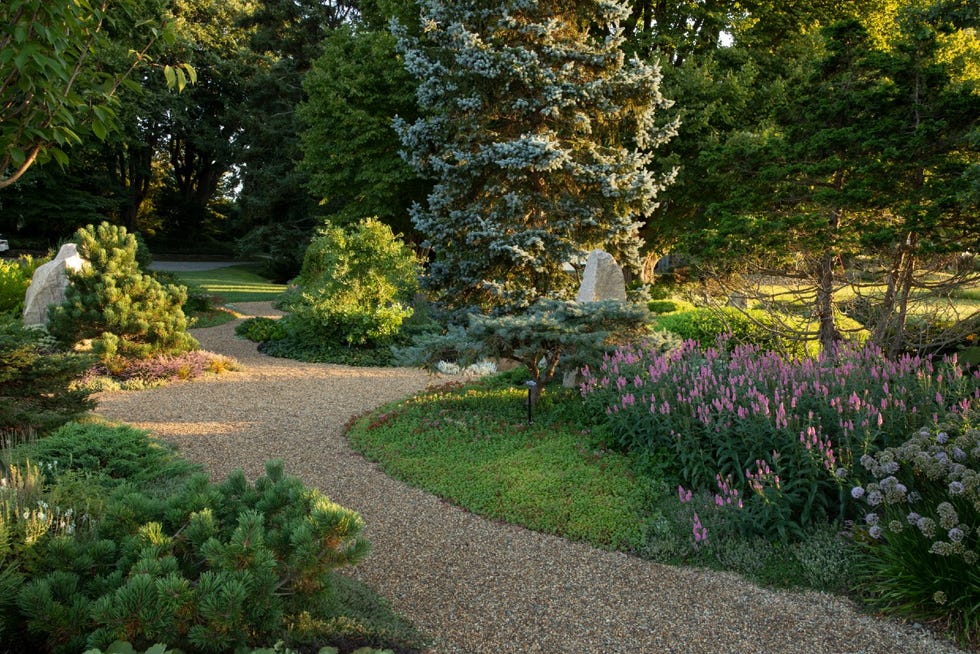
Scott Shigley / Hoerr Schaudt
Sanctuary gardens are meant to feel like a hug from nature, but they’re not meant to fully encircle and remove you from the real world. Because of this, Blom and Arneson say that being able to see a way out is an equally important component of a sanctuary garden.
“I like a horseshoe shape—it’s good to be able to see out whilst being held in the encircling foliage,” Blom shares. “Depending on the size and setting, it’s often important to maintain a clear line of sight to the entry path,” Arneson explains. “This helps reduce the need for constant awareness or alertness about who might be approaching, supporting a sense of ease and relaxation.”
They’re Not Human-Centered
Caitlin Atkinson
As humans, we are wired to find a sense of sanctuary when reconnecting with our natural roots. “Sanctuary gardens may feel comfortable and soothing to our senses, but they aren’t necessarily human-centered,” Arneson says. “What truly brings us a sense of calm is their valuable ecological presence. It’s the reconnection with a healthy, functioning ecosystem, both physically and sensory, that creates sanctuary.”
They’re a Reminder of the Beauty of Diversity 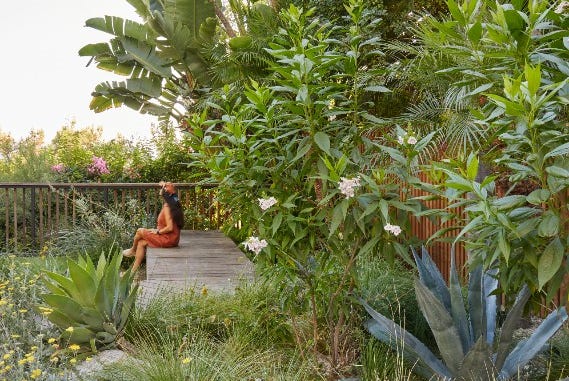
Caitlin Atkinson
A healthy, functioning ecosystem doesn’t feature a single species—it’s more of a melting pot. “Sanctuary gardens are inclusive of birds, butterflies, and other forms of wildlife,” Arneson says. “The presence of diverse species is a clear indicator of a healthy habitat. And a healthy habitat is a continuous cycle that supports all of its members, humans included.”
It’s because of this, Arneson says, that sanctuary gardens tend to showcase native plants. “They help rebuild the broken links in this ecological chain and invite us back into a shared rhythm where we, too, can find refuge,” he explains.
They’re Quiet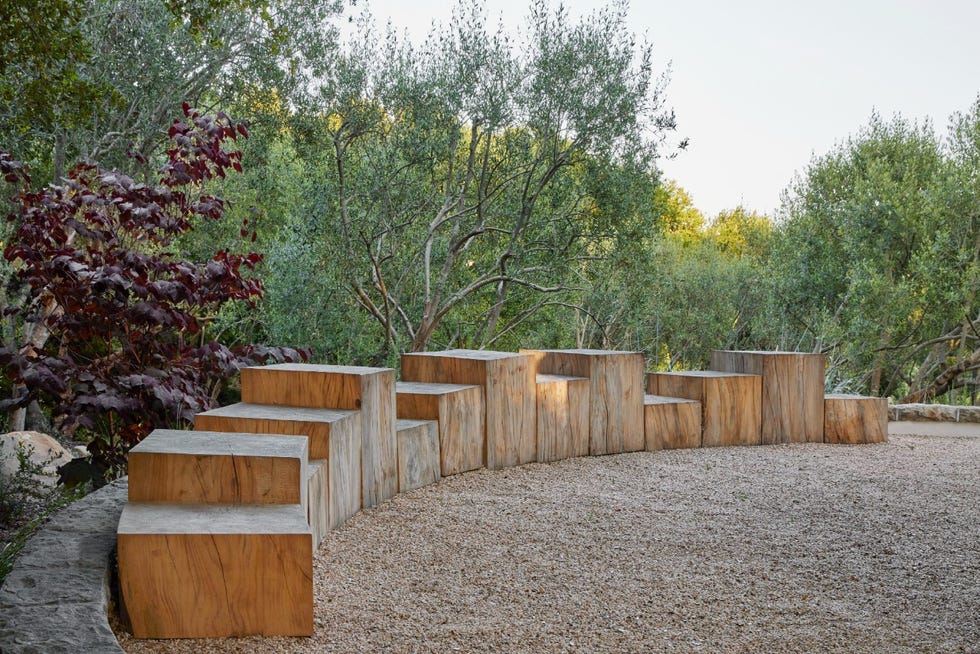
Caitlin Atkinson
Despite the thriving habitat within their walls (or hedges), sanctuary gardens are quiet. “At its core, a sanctuary garden offers a sense of refuge—not just visually, but emotionally and sensorially,” Macchietto says. “These spaces are intentionally quiet, immersive, and restorative. They’re places where the landscape invites stillness, focus, and some kind of relief, and where it supports connection: to nature, to memory, and often to oneself.”
According to Macchietto, this is achieved via the thoughtful layering of plantings, textures, views, and even sounds (such as chimes and fountains). “[It all] contributes to a feeling of intimacy and depth,” he says.
They Prioritize Patterns and Color
Sanctuary gardens are meant to spark interest in a way that urges visitors to get curious about their surroundings, about nature. According to Parker, infusing the space with patterns and color encourages such a connection. “Using alternating symmetrical elements, such as fencing and planting, creates pattern and rhythm in the garden,” she says.
Meanwhile, elements like trellis and lattice can add not only patterns but an opportunity for seasonal bursts of color, too. “Trellis and lattice will produce shadow lines, which are always changing during the day and the seasons,” Parker says. “Vines growing on and through open-fence designs provide a great opportunity to add color, flowers, and seasonal interest.”
The Takeaway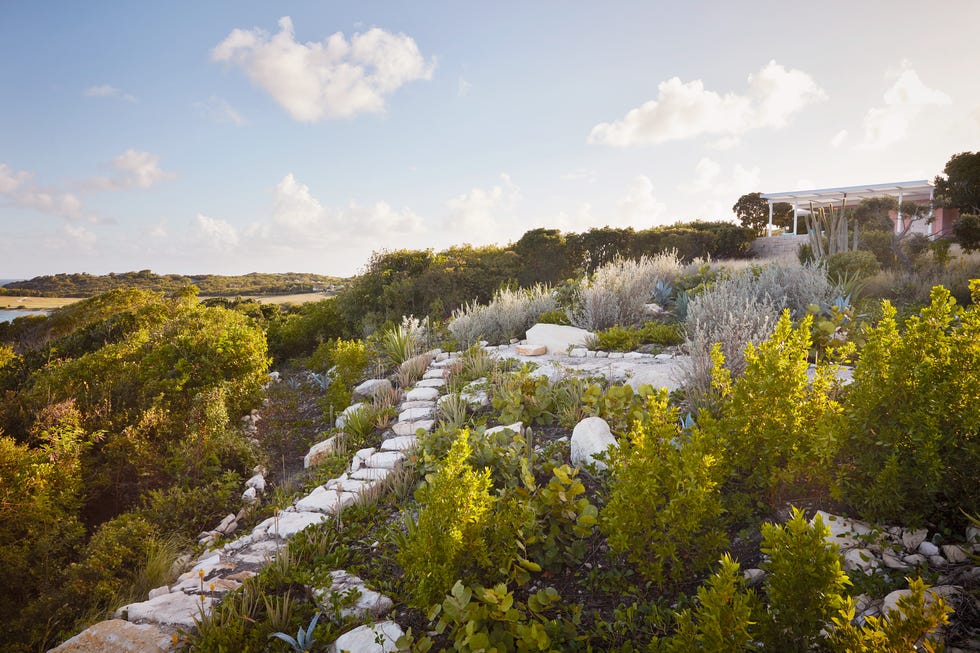
PHOTOGRAPHY BY NGOC MINH NGO
To the untrained eye (and ear), a sanctuary garden may seem like any other curated outdoor space. On the contrary, they’re designed with the utmost intention and care, all with the goal of uplifting visitors. They’re not merely well-manicured lawns, hedges, and beds—sanctuary gardens are a reminder of how intertwined we all are; of the fact that we’re never alone.
“A sanctuary garden offers enough positive stimulation to gently pull our attention away from the thoughts and stressors that weigh us down; they positively engage the senses just enough to create a sense of ease,” Arneson says. “They invite the eyes to wander through textures and the movement of vegetation and fill the ears with birdsong; they keep the mind responding to natural, rewarding stimuli, deeply rooted in our biology, and in doing so, allow us to feel present, restored, and at peace.”
Blom tacks onto this. “We are all vulnerable to shocks in life—an unexpected phone call, a heartbreak, a rough day at work,” she says. “Knowing a green space is near gives an opportunity to restore ourselves in nature.”
And, the way Parker sees it, sitting in nature can drastically improve our overall outlook on life. “Gardens are full of hope for future growth; they prove the existence of the power of nature that is beyond our control,” she explains. “For all who are technology-inundated, gardens and gardening prove truly satisfying, nourishing, and productive.”
So, the next time someone tries to deter you from taking a mental health break in the garden, feel free to politely reveal that it’s perhaps one of the most productive things you can do, both for the mind and the soul.
Rebecca Norris is a full-time freelance writer living in the Washington, D.C. metro area. Over the past 10+ years, she’s heavily covered a range of lifestyle topics, including travel, home, beauty, style, wellness, and celebrity news. She is a graduate of George Mason University, where she earned a B.A. in Media: Production, Consumption, and Critique, along with a minor in Electronic Journalism. When she’s not writing, she can be found strolling with her Jack-Chi, Cash, sipping iced matcha lattes, indulging in delicious cuisine, perusing farmer’s markets and antique sales, collecting colored glass, getting lost within the pages of a book, and exploring new bucket-list cities.


Comments are closed.